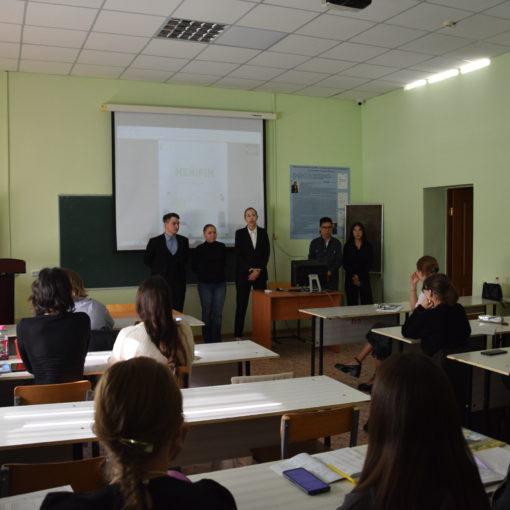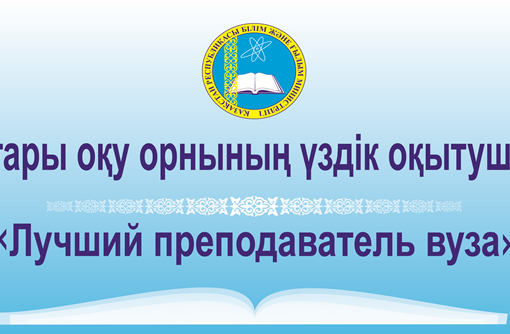On 15 November our country celebrates the Day of Financier, the professional holiday of the employees of the financial system.
This holiday is directly connected with the birthday of the Kazakh national currency – tenge. Therefore, on this day it is customary to remember the merits of those who were at the origin of the birth of the national currency.
Today, financiers face difficult tasks on competent planning and distribution of monetary resources, management of their spending efficiency, as well as development of revenue sources for budgets of all levels.
The Bolashaq Academy congratulates colleagues of the Finance and Accounting departments on their professional holiday.
People who have devoted their professional activities to the light of finance are distinguished by their high professionalism, literacy and responsibility.
We wish all of us always growing profits, transparent turnovers and huge development prospects.
From history:
The Kazakhstan currency has experienced a lot: several waves of devaluation, and inflation of 3061% per year, but in 2004 it was recognized as the best among the CIS countries. Today, the tenge is the economic foundation of independence, a symbol of sovereignty, and a full part of Kazakhstan’s recent history and future.
According to history, the formation of the market economy began in Kazakhstan 20 years ago under very difficult economic circumstances. It took extraordinary efforts by First President Nursultan Nazarbayev to keep the country at the edge of the abyss and then to bring it out of a deep crisis.
The transition to the market was complicated by the fact that Kazakhstan remained dependent on external financial factors. In this difficult situation, Kazakhstan was preparing to introduce its own national currency, the tenge.
The introduction of the tenge was a very challenging operation. In 1991, a special group of designers was established: Mendybai Alin, Dosbol Kasymov, Agimsaly Duzelkhanov, Timur Suleimenov and Hairulla Gabzhalilov.
“On 12 November I set the date for the introduction of currency,” writes Nursultan Nazarbayev. – I mobilized all KNB managers for the operation. The hardest thing is to take the money to all the districts, to all the banks. Probably, there was no precedent in the world for such a fast and successful operation to introduce a new currency”. The exchange of old money for Kazakhstani tenge started at 8 o’clock on 15 November 1993 and was successfully completed at 8 p.m. on 20 November. A total of 950 billion roubles were withdrawn from circulation. Thus, the national currency was introduced in Kazakhstan. As N.A.Nazarbayev emphasized in his memoirs: “Building your statehood, you cannot do without your own currency. Sooner or later it was necessary to introduce it. Currency is the blood vessel of the entire economy”.
The introduction of the national currency also allowed the state to start forming a full-fledged banking sector. About 200 banks have appeared in the republic.
Today, looking back at the difficult initial period in the life of the young independent republic, it is clear that the decision of the First President Nursultan Nazarbayev to introduce its own national currency has become key to enter a new stage of economic development. Exactly introduction of tenge into circulation allowed Kazakhstan to make the first and such necessary steps on construction of national market infrastructure.
Over the past years, the Kazakhstan currency unit has gained recognition in the international market. Foreign experts rightly believe that tenge is one of the most reliable and stable currencies in the CIS and Central Asia.
It is one of the most interesting facts:
- According to the most popular version, the Russian word “money” (i.e. “money”) comes from the Turkic “tenge” or “denge”. At present, tenge is a monetary unit in Kazakhstan, as well as a coin of exchange in Turkmenistan.
- The first batch of tenge was printed abroad, in England. The first change of currency – tiyn (1/100 part of tenge) – was made in the form of banknotes with par value of 1, 2, 5, 10, 20, 50 tiyn.
- The first coins came from Germany.
- The tenge symbol is the letter T with an additional line on the top appeared in 2006.
- The development of the national currency was carried out in a very short time – one year. Another interesting fact: on the banknote with a face value of KZT 2000 issued in 1996, unlike other banknotes, there are two signatures (usually one by the then acting chairman of the bank – editor’s note): Chairman of the Board of the National Bank in 1996 Oraza Dzhandosov and Director of Accounting and Reporting Department of the National Bank Nailia Abdulina.
Source: https://online.zakon.kz





